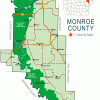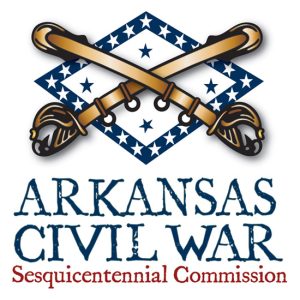calsfoundation@cals.org
White River Expedition (February 20–26, 1864)
| Location: |
White River, Big Creek, Thomas’ Mill, Helena (Phillips County) |
| Campaign: | None |
| Date: | February 20–26, 1864 |
| Principal Commanders: |
Major Eagleton Carmichael (US); None (CS) |
| Forces Engaged: |
Fifteenth Illinois Cavalry (US); Unknown Confederate Infantry and/or Cavalry |
| Casualties: | 4 captured, 1 wounded (US); Unknown (CS) |
| Result: |
Union capture of Confederate soldiers and return to Helena |
The White River Expedition of February 20–26, 1864, resulted in Union forces capturing numerous troops from different Confederate infantry and cavalry units. To the dismay of the Union cavalry involved in this expedition, the Confederate troops in the area were able to attack Union forces, recapture some of their own troops, and retreat without Union forces keeping up. Without the proper rations, the Union forces returned to Helena (Phillips County) with the remaining Confederate prisoners to regroup.
After receiving orders to travel up the White River, Major Eagleton Carmichael, commander of the expedition, and Captain Ezra King of the Fifteenth Illinois Cavalry embarked on February 20, 1864, from Helena aboard the Cheek, leaving at 5:00 p.m. Arriving at the mouth of the White River by 2:00 a.m. on February 21, Maj. Carmichael took stock on the shore. At daylight, Carmichael dispatched a portion of the unit including Capt. King from the camp to the farm of a man named Simms, where they encamped overnight. With the remaining cavalry, Carmichael continued his embarkation up the White River and arrived at Bay Landing at 8:00 p.m., making camp for the evening. Prior to completing camp for the evening, Carmichael dispatched twenty men under the command of a Lieutenant Fisher (possibly William Fisher) in the hopes of gaining information from the houses in the surrounding area. They returned without discovering any Confederate soldiers or information of their whereabouts.
On the morning of February 22, King’s expeditionary force crossed Big Creek. It was a grueling process because a boat had recently been destroyed along the river. Once across the river, King marched his force toward Wallace’s Ferry near Trenton (Phillips County) and stumbled upon a Confederate encampment. King’s cavalry chased some of the Confederates, at which point one soldier was thrown from his horse and severely injured, delaying King’s movement toward the ferry. Arriving at the encampment, King discovered that the pickets—as well as Union captain Wier (first name unknown)—were gone, at which point he dispatched Lieutenant James Campbell with fifteen men to Thomas’ Mill Road.
Carmichael’s expedition commenced its march at daylight on the same morning, moving westward up the bay to “Widow Jackson’s” place. After learning of the encampment of a Confederate captain Mayo (first name unknown), Carmichael advanced but discovered no enemy in the vicinity. Moving on, he passed through Pointer’s and Palmerton’s farms, where he destroyed a blacksmith’s shop in the woods. The force dispersed into two groups to rendezvous at Colonel J. R. Boyce’s encampment. Prior to their arrival, Carmichael captured Confederate private J. A. McMannis, alias Anderson Palmerton, from Davis’s company (likely Edmund Davis’s company) with one horse and saddle but no firearms. Carmichael then ordered Boyce to report to headquarters while he headed to the house of Captain Mayo’s widow, with the understanding that he could retrieve information, but received none. He then visited a Dr. Hendricks (no first name given), where he discovered a wounded soldier from the Union’s 126thIllinois Infantry and placed him on one of the doctor’s mules. From there, Carmichael camped at a Mr. Lightfoot’s (no first name given) property for the evening. His daily report also noted that his company captured Lieutenant B. F. Thomason, Private William A. Ward, and Private Henry F. Cook, all from Davis’s company, with two horses, two saddles, and two horse pistols.
Carmichael left Lightfoot’s property on the morning of February 23, dividing the company, and traveled different roads to Buck’s Point and Higginbotham’s farm, capturing Confederate private Rufus Higginbotham of Colonel M. M. Casteel’s company and a horse, saddle, and carbine, as well as Confederate Private J. A. Brewer and Private Joseph E. Terry of Company I, Twenty-fourth Texas Infantry. A detachment captured Private J. H. Rogers of Davis’s company, along with three mules belonging to Confederate Willis Macon. Carmichael then proceeded to the Simms plantation and fed the horses, moving on to Humphrey’s land and then to Trenton. Lieutenant Hazard Chase, accompanied by twenty men and the prisoners, left for Helena, ordering Captain King to rendezvous with his outfit at Colonel Taylor’s (no first name given). Camping in the area around 11:00 p.m., Carmichael heard a volley outside of the camp but assumed it to be a detachment and ordered his troops to remain quartered for the evening.
Also on February 23, Captain Wier returned, and Captain King dispatched ten men and a sergeant to reinforce Lieutenant Campbell with orders to fall back to the ferry in case of danger. About 9:30 p.m., King received the orders from Carmichael’s force, and at 11:00 p.m., King heard the same volley as Carmichael, immediately ordering his troops to mount and head toward Thomas’ Mill. To his chagrin, he learned that Campbell’s post had been surprised, with most of the horses and arms captured by unknown Confederate troops. The final report of the skirmish had four Union troopers captured, including one lieutenant; one private wounded; and twenty-four horses and most of the equipment and arms seized by the Confederates. Captain King realized it would be impossible to reach the Confederates until the next night and thus proceeded to Carmichael’s expedition, arriving around 3:00 a.m.
The morning of February 24, Carmichael’s force marched toward Thomas’ Mill’s post with the hopes of reaching the Confederates trailing the moving group, but they quickly realized that the Confederates had moved in different directions so that their trail might not be discovered. Carmichael discovered their direction and followed for about twenty-five miles, crossing Big Creek running at the mouth of Spring Creek. Then Carmichael moved onto Spring Creek Road and realized that the Confederates were marching fast and that the cavalry was not gaining ground on them. Without substantial rations, Carmichael turned the force to Paradise Road to Dr. Lander’s property and camped for the night. He had captured one Private Roach (possibly Henry P. Roach) of Anderson’s Company during the day, destroying Roach’s shotgun and taking his horse and saddle.
At 4:00 a.m. on February 25, Carmichael marched to Helena without feeding the horses or providing rations for breakfast. Carmichael reported that a Union guard from Trenton with prisoners captured Private M. M. Casteel of Casteel’s company. Captain Wier provided prisoners Major C. H. Carlton and Captain C. L. Moore of the Fifteenth Arkansas Infantry, while Captain King turned over Private Richard Brown of Company E, Fifth Mississippi Cavalry. All horses and saddles from those captured became property of the Union quartermaster at that post.
For additional information:
The War of the Rebellion: A Compilation of the Official Records of the Union and Confederate Armies. Series I, Vol. 34, pp. 148–150. Washington DC: Government Printing Office, 1891.
Matthew Whitlock
Old Dominion University




 ACWSC Logo
ACWSC Logo 



Ezra King is my great-great-grandfather.